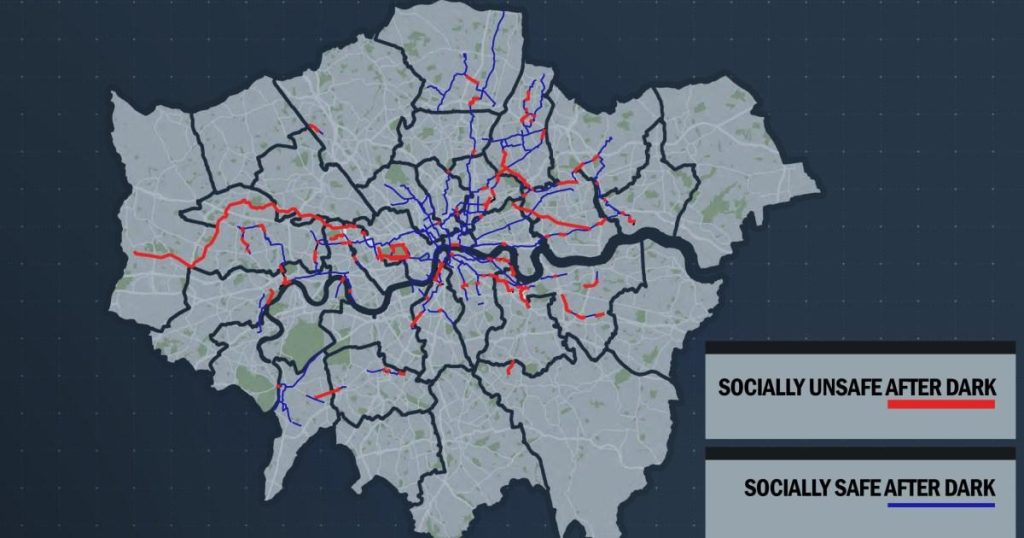The Pervasive Threat: Women Cyclists Face Fear and Harassment on London’s Roads
The simple act of cycling, an activity often associated with freedom and enjoyment, becomes a source of anxiety and vulnerability for many women in London. The fear of harassment, assault, and even violence forces them to restrict their movements, particularly after dark, avoiding underpasses, canals, parks, and other isolated stretches of road. This reality starkly contrasts with the intended purpose of cycling infrastructure, designed to promote safe and accessible transportation for all. Two women cyclists bravely shared their personal experiences of verbal abuse and near-misses with aggressive drivers, highlighting the pervasive threat they face on London’s roads. Their stories underscore a broader issue of gendered violence and intimidation, forcing women to constantly assess their surroundings and make difficult choices about their safety.
Unsafe by Design: A Critical Look at London’s Cycleway Network
A recent study by the London Cycling Campaign (LCC) reveals a disheartening truth: a significant portion of London’s Cycleway network is deemed "socially unsafe" after dark, particularly for women. The LCC’s assessment, based on nighttime rides conducted by volunteers, found that almost a quarter of the 219-mile network poses risks related to potential harm from other people. This translates to approximately 52 miles of cycle routes effectively unusable for many, especially women and girls, who disproportionately bear the burden of this insecurity. The assessment considered various factors contributing to a sense of unsafety, including the route’s location (e.g., proximity to railways, industrial areas, parks, or towpaths), presence of overgrown vegetation, reports of antisocial behavior, existence of blind corners or potential "ambush points," a general feeling of neglect, lack of escape routes, and inadequate lighting.
A Catalogue of Concerns: Identifying the Most Vulnerable Areas
The LCC’s detailed analysis pinpoints specific vulnerabilities within the Cycleway network. 58% of the routes were found to contain at least one "socially unsafe" segment, with the ten worst Cycleways deemed unsafe for 70% or more of their length. Seven Cycleways were labeled "100% socially unsafe," including the Grand Union Canal Cycleway and the Greenway (C22). The report highlights a disturbing pattern: 63% of the unsafe sections are situated in or adjacent to parks, followed by waterways, railways, industrial estates, and underpasses. These findings expose a critical flaw in the design and maintenance of these routes, which, despite being intended for leisure and commuting, fail to provide a basic level of security for a substantial portion of the population.
The Human Cost of Inadequate Infrastructure: Testimonies of Harassment and Fear
The LCC’s findings are not mere statistics; they represent the lived experiences of women cyclists who navigate these unsafe routes daily. Nevin Sunderji, a travel consultant and cycling teacher, recounted a harrowing incident where a driver hurled verbal abuse at her for simply occupying the correct lane. The unprovoked attack left her shaken and in tears, demonstrating the profound emotional impact of such encounters. Similarly, Julia Manteghi, a retired nurse, described being threatened by a van driver who nearly collided with her. These incidents, coupled with the constant fear of harassment and violence, compel women to alter their routes, avoid certain areas altogether, and curtail their cycling activities, particularly after dark.
A Call for Action: Addressing the Systemic Issues of Safety and Security
The LCC report serves as a powerful indictment of the current state of cycling infrastructure in London. It urges Transport for London (TfL), local councils, and the police to take immediate action to enhance safety measures, particularly in underpasses, isolated areas, and known crime hotspots. The recommendations include improved lighting, increased CCTV surveillance, and a greater focus on addressing antisocial behavior. The report stresses the need for a more inclusive approach to designing and maintaining cycle routes, ensuring that they cater to the needs and safety concerns of all users, particularly women and girls.
Toward a Safer Cycling Future: Collaboration and Accountability
TfL has acknowledged the report’s findings and pledged to consider its recommendations. The organization emphasized its commitment to improving safety for women cyclists, including a trial of a new women’s safety auditing process. However, true progress requires a concerted effort from all stakeholders, including the Mayor’s office, the police, boroughs, and community organizations. This collaborative approach must prioritize addressing the root causes of gendered violence and harassment, fostering a culture of respect and safety on London’s roads, and ensuring that cycling becomes a truly accessible and enjoyable activity for everyone. Ultimately, the goal is to create a city where women can cycle freely, without fear, and without having to compromise their safety for the sake of their mobility.











